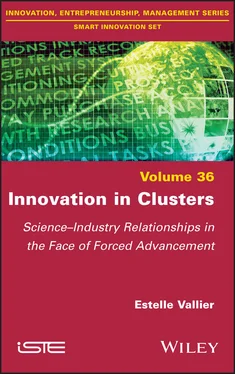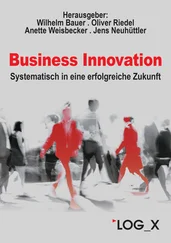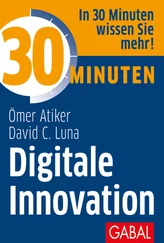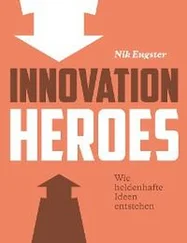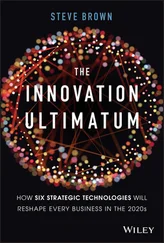Therefore, we can say without further ado that the challenge has succeeded. This result, through the detailed analysis developed throughout the chapters of the second part of this book, leads the reader to explore the different levels of intermediation through which any institutionalized cluster pilot operates. As a result, the different problems and obstacles that resolutely stand in the way of the imagined and imaginary road of the uninterrupted flow of innovations from science to industry, in which it continues to believe, are revealed. Throughout the chapters, the reader will be aware of this need for creativeness on the part of the cluster’s operational teams, in order to keep the flame of successive attempts to establish links alive. The picture that emerges is similar to the reproduction of the legend of Sisyphus. This is evidenced by the many meeting mechanisms, tools and instruments of all kinds, all of which are aimed equally and simultaneously at academic laboratories and enterprises (mainly start-ups) that have been labeled, rather than those that are in the process of being labeled. Moreover, but no less important, lies a paradox specific to this instituted and organized process; for if the stated aim, the “cluster effect”, is to generate innovations from this networking, without this aim being able to be truly achieved to its desired extent, what hinders or even prevents it, without knowing how to precisely identify its contours, obliges the intermediary to demonstrate innovation himself in order to succeed in finding the right passage. However, it is one thing to note a certain impasse in this path and quite another to explain it. Perhaps at this nodal point, armed with the analysis, we see the specific and advantageous contribution of social science, singularly of sociology.
The final two chapters propose unravelling what is constantly being tied, rewoven and replayed by the practices of the actors themselves: scientists, startup entrepreneurs and cluster administrators. It is clear that what appears to them as an enigma pushes them to redo what has already been done, through the use of different devices. The path taken by Estelle Vallier to provide reason to this process, which is to an extent blocked in on itself, is to question cooperation, as a generic relational mode in a world given over to competition.
However, there is no better plot, including in social science, than to leave it to the reader to discover the mechanisms and the solutions that result from them. I will therefore refrain from going any further, since the reader of this book could be a sociologist, of course. Let us hope, however, that beyond the legitimate concern of satisfying the interest of subject matter specialists, practitioners of technoscience clustering will themselves be able to discover, from another perspective than their own, this intertwining that they contribute to produce, together, in their day-to-day relationships. For, if some consider that sociology is a possible weapon for transforming social practices, there are indeed some reasons. The simplest to state, but certainly, it seems to me, the most difficult to implement, is this: above all else, the role of sociology is to contribute to enriching the reflexive process of the action of any individual and/or collective. In this, it is fully involved in the social future and must claim it. There is no doubt that this book bears the mark of this!
Philippe BRUNET
Laboratoire interdisciplinaire
Sciences Innovations Sociétés
Gustave Eiffel University
August 2021
Innovation is as much an overused term as it is an economic watchword: “We must innovate, be innovative… or disappear!” 1It is a sign of economic recovery, dynamism and technological potential for a better world. One of the main levers of innovation policies in industrialized countries is to organize meetings between researchers and industrialists, particularly within innovation clusters that bring together companies, laboratories and training within a particular sector. Thus, the validity and legitimacy of these mechanisms, which take shape in dedicated locations, formerly called technopoles, now known as clusters, no longer need to be proven. Tomorrow’s economy, like a promise that is always being renewed, is germinating in these places through the combined effects of innovation, its territorialization and the power of the intricate and informal relationships that are generated there. This book is particularly concerned with the articulation between the promise of innovation and the interactions observed within a particular cluster.
I.1. Innovation policies and the clustering process
In France, innovation clusters are the result of a legislative and fiscal framework that has encouraged closer ties between science and industry for more than 30 years. In this context, the state, as well as international and European authorities, is particularly encouraging territories to develop clustering policies. However, this logic is not a new idea and has been the subject of work since the 19th century, under other names. The term cluster, on the other hand, was conceptualized in North American management literature in the 1990s and has found favor in most public policies in industrialized countries.
I.1.1. Ensuring the legal and fiscal framework for the partnership between science and industry: governing from a distance
In recent decades, most industrialized countries have opted for strategies that boost the potential outputs from innovators or creators (goods and services resulting from innovation) by legislating and investing in them. The main public investment consists of aligning the creation, or scientific discovery phase as closely as possible to its technological and industrial application. Efforts are essentially expected from researchers, who are encouraged to become entrepreneurs, or at least to make their research immediately available for industrial use (Stehr 2000). Thus, the expression “contextualization of science” (Gibbons et al . 1994) has been coined, within European institutions, to describe the process of heteronomization of science by other social fields, principally economic; it must be accountable to society and, above all, be involved in the commercialization of its results (Lamy and Shinn 2006, p. 47). In France, the 1999 Innovation and Research Act, also known as the “Allègre Act” 2, is presented as the significant legislative tool that guarantees a better contextualization of science. Indeed, it enables researchers, based on their scientific results, to create a company and/or to register patents. In order to support these new kinds of entrepreneurs in the creation of their start-ups, the Act provides for the reinforcement of the creation of public incubators. These structures are intended to provide, not direct financial, but indirect resources to assist in the setting up of a company: legal advice, construction of a business plan, filing of patents, search for public and private funding, etc. Incubators also provide privileged access to material resources, such as premises or equipment. This legislative framework complements the advantageous tax structure provided to research and development (R&D) since 1983 with research tax credits ( crédit d’impôt recherche , CIR). Tax reduction, which is granted to companies based on their R&D expenditure, is the largest financial investment by the government in this area, especially since the 2008 reform under President Sarkozy 3. In a 2013 report 4, the Court of Auditors highlighted the significant tax advantage represented by CIR, which primarily favors large companies 5, without any real impact on the recruitment of scientific personnel in the private sector, particularly young doctors. Despite numerous warnings and limitations, demonstrated on several occasions by research actors, including a report by the CNRS and a survey report by the researchers’ association “Science en marche (Science on the move) ” (Métivier 2015), and by institutional actors 6, it was renewed by the Valls government in 2015. This renewal demonstrates the political vision of innovation and its public governance, which, despite criticism from higher education circles, favors the commercialization of research within private companies.
Читать дальше
